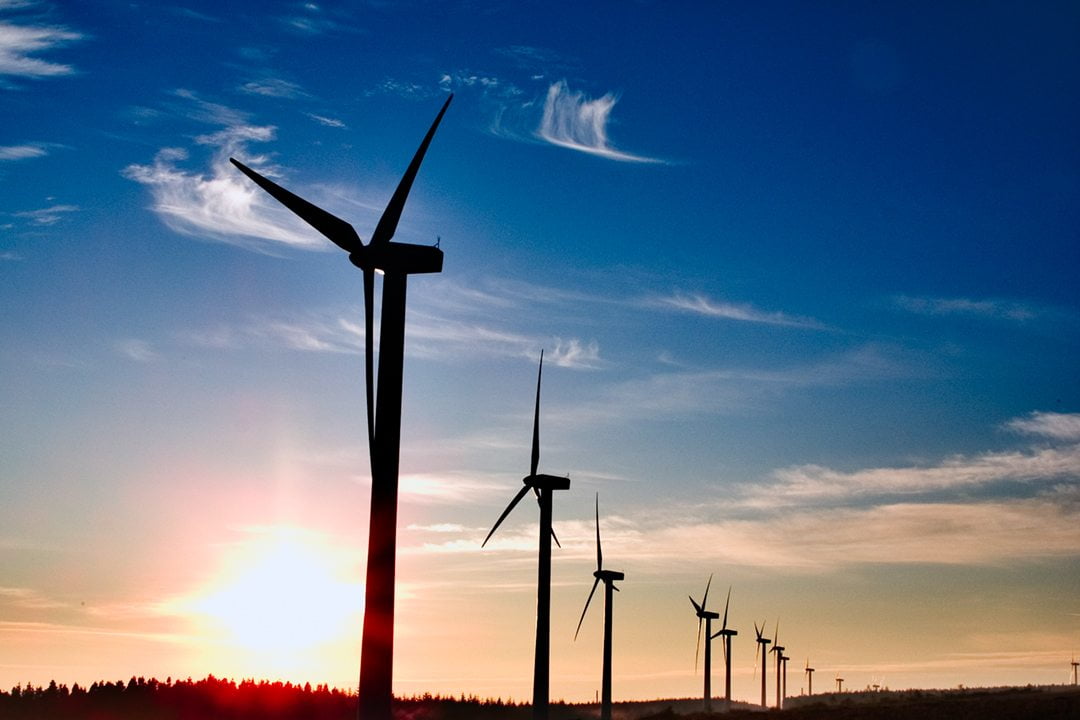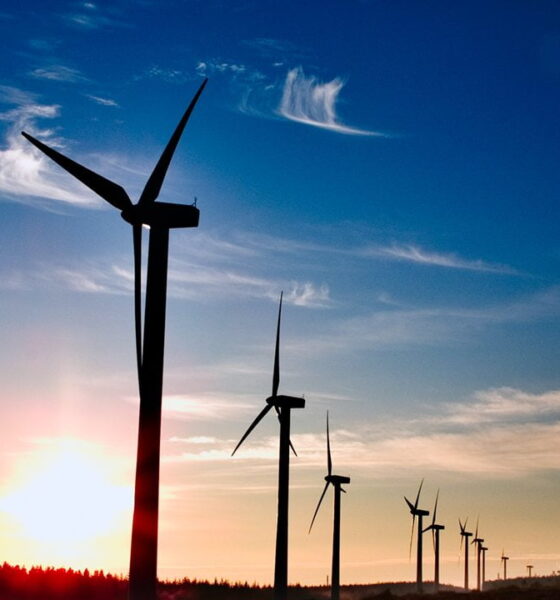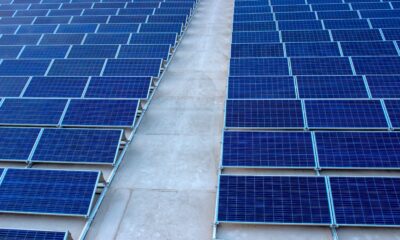

Economy
The myth of renewable energy ‘intermittency’
You’ve probably heard the intermittency myth before. “The wind doesn’t always blow and the sun doesn’t always shine, so we can’t rely on renewables to meet our energy needs”, they say. It may have even made you think twice about the UK’s renewable transition.
But the intermittency myth is just that: a myth. It overstates the basic ‘problem’, overlooks the reality that renewables are already deployed in large numbers, and ignores the innovations that mean we can get close to 100% renewables in the future.
So whilst the variability of the wind and sun may pose challenges, it’s certainly no barrier to a renewable energy future.
The problem is overstated
The fact that some renewables – namely wind turbines and solar panels – do not generate power all of the time is not in dispute. But listen to some renewable critics and you’d be forgiven for thinking renewables hardly ever produce power when we need it.
In fact the reverse is true. In the UK it is usually most windy when power demand is highest, during the dark winter months. A 2006 Oxford University study found a positive correlation between UK wind speeds and periods of high demand over 30 years – a finding backed up by recent modelling by the UK’s independent Committee on Climate Change. You could see this yourself last month, one of the stormiest on record, when 10% of our electricity was generated by wind turbines exactly when we needed it.
What’s more, when different renewable are deployed together over large areas, the peaks and troughs in generation associated with one particular technology or location are reduced. Because it’s often sunny when there’s no wind and windy when there’s no sun, the reality of renewable intermittency across a country such as the UK is less than is sometimes claimed.
The flipside of the coin is that conventional fossil fuel generators are not as reliable as you might think. They break down and when they do a massive amount of power can “trip and fall off in a matter of milliseconds”, according to head of strategy at the National Grid, Richard Smith. At the time of writing, for example, two SSE coal-fired plants are out of action due to unplanned outages.
For this reason Smith argues that wind (with forecasting that is now 95% accurate within 24 hours) can be seen as more predictable than nuclear and coal plants. In parts of the US, the recent extreme cold has left 20% of conventional thermal generators (coal and gas) out of action, whilst the increasing amounts of wind output stayed online and helped prevent blackouts.
This is not to say there aren’t times where demand is high and renewable generation is low. There are; the usual example being a windless cloudy week in January. And of course we need other forms of more flexible generation to step up at such moments. But such rare events should be put in their proper context, and the basic issue of renewable intermittency should not be overstated.
The facts on the ground are overlooked
It’s also a fact that the UK is already coping well with increasing amounts of wind and solar power. In 2012 these sources delivered over 5% of our electricity with not one blackout as a result.
If 5% doesn’t sound like much, consider that other countries have already gone much further. Germany now gets 13% of its electricity from wind and solar. Not to be outdone, Spain generated a massive 21% from wind last year, according to the country’s grid operator, meaning it overtook nuclear as the country’s biggest single source. And despite what some sceptics say, the evidence showing a reduction in overall carbon emissions as a result is growing by the day.
How is this possible? The answer is simple – we already have the infrastructure in place to fill the gaps when wind and solar are not generating power. In the UK, the extensive network of pylons and wires that make up our National Grid already connect homes across the country to a diverse range of generators. These include flexible hydro plants which can provide power within minutes and flexible gas plants than can ramp up within hours.
In fact even in the absence of renewables our electricity system must deal with significant amounts of intermittency. Not only do ‘reliable’ nuclear and coal plants stop working at short notice, but the nation’s power use can spike in a matter of moments when millions of kettles get turned on after a big football match. Yet the lights don’t go out. Grid operators balance supply and demand. The system copes.
Again this is not to deny there are challenges in introducing greater amounts of variability into power networks designed for a different era, but we should recognise that it can be done even within the confines of contemporary energy systems.
Yet advocates of the intermittency myth overlook these facts on the ground.
Ingenuity and innovation are ignored
Further into the future we will need bigger structural and behavioural changes to achieve very high amounts of variable renewables. But once again renewable critics too often ignore the innovations that will allow this to happen, many of which are already underway.
In recent years a large body of research from academic institutions, government-backed bodies and NGOs have tracked the latest technological developments and mapped out the strategies we will need to move towards an energy system dominated by renewables. The UK’s Committee on Climate Change has identified four critical areas:
Demand response – Large users of electricity already voluntarily power down to help balance the grid when demand is high. Supermarket freezer warehouse chain McCulla, for example, can turn off its coolers for short periods whilst getting paid for this service; which is also a cheaper solution for the UK as a whole than building more power stations. In the future, households and businesses will also be able to alter their usage depending on the availability of electricity, using smart technologies to control appliances and take advantage of variable energy prices.
Storage – The UK has limited scope for expanding what is currently the cheapest form of storage – pumping water up mountains and releasing it when needed. However rapid innovation in new storage technologies means other methods will become economical and widespread. When they do, one idea is to use the nation’s future fleet of electric cars as a giant battery to store energy when lots is available and release it back into our homes when we need it.
Interconnection – More interconnectors between the UK and Europe will mean that renewable energy can be transferred large distances from where it is abundant to where it is needed at any given time. A 2010 PwC report even suggested that a European supergrid could integrate wind from north-west Europe, hydro from the Alps and Scandinavia, solar from southern Europe and biomass from eastern Europe, allowing us to get all of our electricity from renewables in the future.
Balancing generation – Finally, a specialist fleet of highly efficient and flexible generators could provide the back-up we need for the times when these other solutions cannot balance supply and demand. This might include gas plants but also biomass plants, which if fitted with carbon capture and storage technology could even be ‘carbon negative’.
According to National Grid, these kinds of strategies mean we could get over 50% of our electricity in the UK from renewables by 2035 – a massive increase on today. The Committee on Climate Change says even 80% is possible by 2050. And it’s not just here. Similar assessments have been made in the US, Europe and elsewhere.
The problem with the intermittency myth then, is not that it doesn’t contain any truth at all. Variable renewables do pose challenges for conventional ways of thinking about energy and managing our electricity system. But the fantasy is that these challenges are not being overcome in the present, and that they can’t be overcome in the future.
It’s time to consign the intermittency myth to history.
Sam Friggens is a writer for renewable energy funding platform Abundance Generation. You can follow him on Twitter: @Sam_Friggens. This article originally appeared on Abundance’s blog.
Further reading:
Bad jokes aside, Bradley Wiggins’ success is a lesson for renewable energy innovation
Keeping the crowd in crowdfunding as ‘big finance’ arrives






























